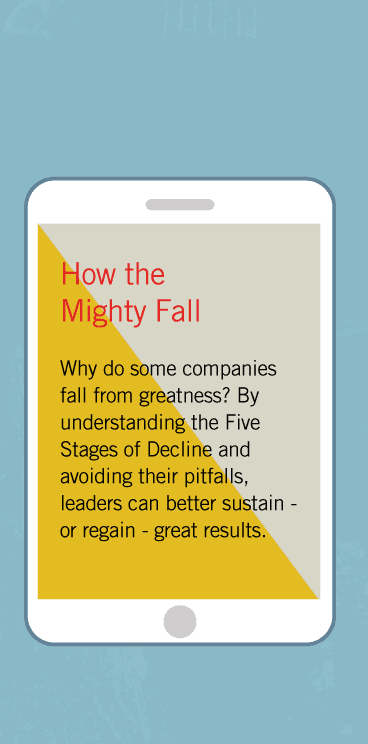The Timeless Physics of Great Companies
Well, yes and no. Yes, the specific methods of building companies in coming years will be dramatically different than in the past. But that does not mean we should toss aside the timeless principles that made great companies great. What's the difference? Think of it like this: While the practices of engineering continually evolve, the laws of physics remain relatively fixed.
The immutable laws of management physics include some simple yet important concepts: Do only those things that you can be the best in the world at; those things you can be passionate about; things that make simple economic sense. Take the axiom that you need to “put the right people on the bus.” The best executives have always focused first on getting people who share their values and standards. They understood that vision and strategy cannot compensate for having the wrong people. Once you have the right folks in place, it's much easier to steer the bus as conditions change.
That's exactly the idea that Bill Hewlett and David Packard had in mind when the two young engineers met to form their company in 1937. The minutes of that meeting begin by stating their intention to manufacture innovations in the general field of electronics, but they then go on to say, “The question of what to manufacture was postponed.'' In fact, the whole founding concept of the company was not so much what, but who. They were best friends in graduate school and simply wanted to work together and create a company with people who shared their values and standards.
As Hewlett and Packard scaled up, they stayed true to this guiding principle. After World War II, they hired a whole batch of fabulous people streaming out of government labs, without anything specific in mind for them to do. Packard grasped the subtle truth that a great company will always generate more opportunity than it can handle, and that growth is ultimately constrained only by the ability to get enough of the right people. At the same time, if he picked the wrong person—someone misaligned with the company's values or unable to deliver results—Packard would throw him off the bus, and in a hurry.
Yes, the Internet requires significant changes in the way we manage and lead. But if you don't have the right people, it doesn't matter what you do with the Internet; you still won't have a great company. If, for example, Value America had spent less on advertising ($69 million in 1999 on a revenue base of $183 million) and invested even half that in assembling an army of the best possible people, then perhaps it would have avoided the distinction of becoming the consummate dot-com implosion. Iacocca-style advertising and a snazzy Web site are all fine and good, but Packard's Law still holds, even in the Internet economy: Growth in revenues cannot exceed growth in people who can execute and sustain that growth.
In fact, our bigger problem today lies not in the fact that we live in a time of change. Rather, like people in the 1500s groping to understand the natural world, we have only limited understanding of the physics of great companies. Worse, we inconsistently apply what we do understand.
My group recently completed a four-year project to answer the question, “Can a good company become a great company?'' We began our research with 1,435 companies that had been among the 500 largest, going back to 1965. We then searched for companies that made a shift from good to great performance—meaning they generated cumulative shareholder returns greater than three times the market average over 15 years. How many do you think we found?
The answer: eleven.
Despite the rise of first-class business schools and the explosion of management literature, only 11 of 1,435 companies showed a sustained and verifiable shift from good to great. In analyzing the good-to-great CEOs, two things became clear. First, they had a firm grasp on a few basic principles, such as getting the right people on the bus. Second, they were fanatically consistent in applying those principles. When in doubt, they would not hire, no matter what the pressure to get a warm body on board. And when they knew they had to make a personnel change, they would not make the mistake of waiting for a more convenient moment; they acted.
The truth is, there's nothing new about being in a New Economy. Yes, the Internet is a big deal, but electricity was bigger. And in each evolution of the economy over the past 150 years, the best executives have adhered to the same basic principles, with rigor and discipline.
I can't tell you exactly what a corporation will look like 50 or 100 years from now. But I can promise this: If you toss out all the time-proven fundamentals, you'll have no chance whatsoever of building an enduring, great company.






